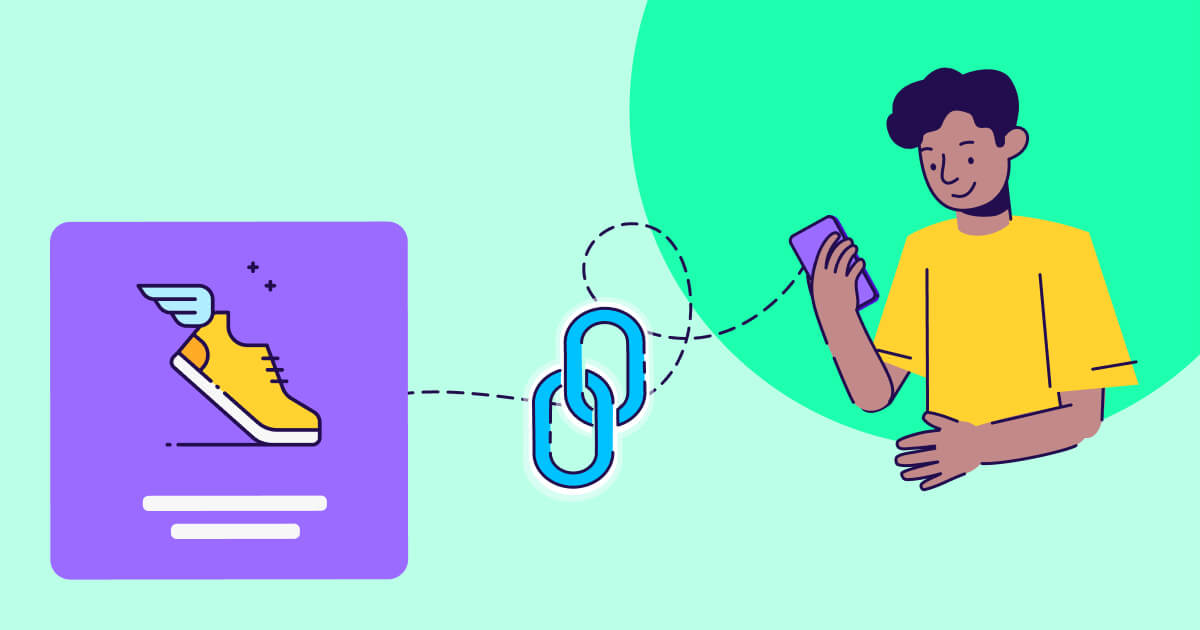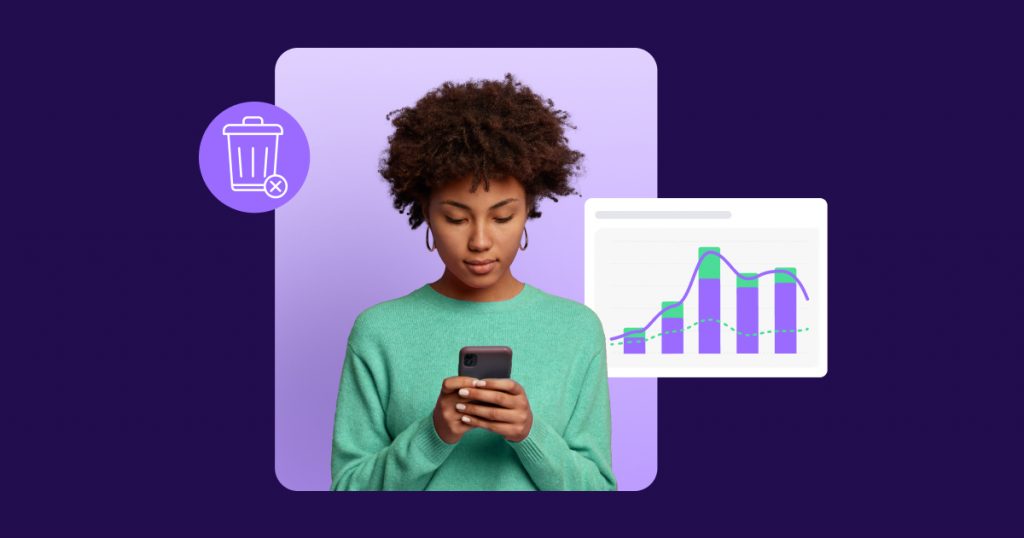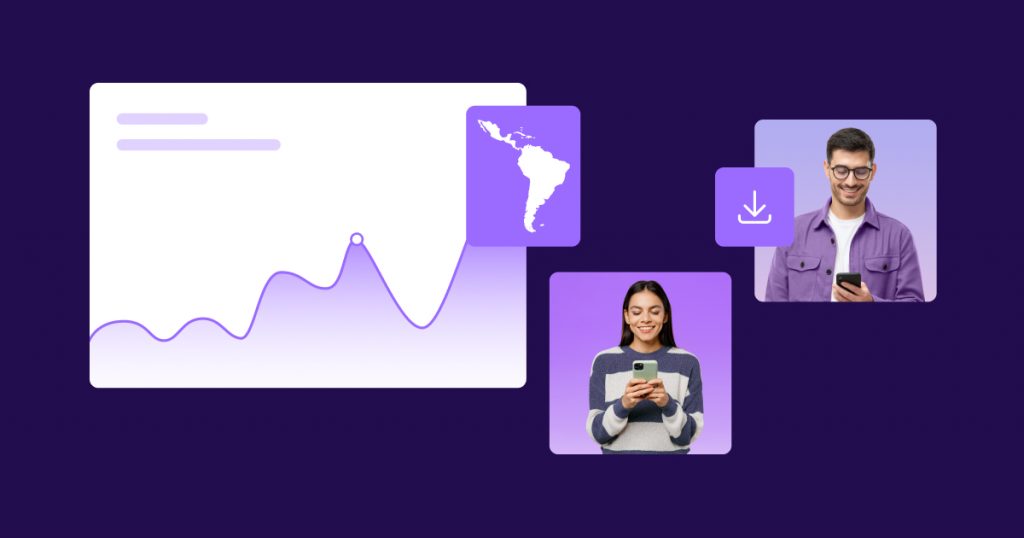
Introduction
Deep linking. You’ve heard the term. Perhaps you’ve heard that it improves user experience, resulting in a significant boost of conversions and revenues. And maybe you’ve been searching high and low for the ultimate guide that’ll teach you the basics quickly in simple, non-technical language.
Well, you’re in luck. We’ve put together an introductory primer you can read in 15-20 minutes. Here’s what’s inside:
- An introduction to the concepts of deep linking and deferred deep linking
- An explanation on how they work
- A discussion of the benefits of deep linking and how it drives ROX (return on experience)
- An overview on Universal Links, App Links, and URI schemes
- Use cases galore covering different industries and business challenges
- Implementation considerations
Sounds good? So what are you waiting for? Have at it.

Chapter 1
What is deep linking?
In the context of mobile, deep linking describes the action of delivering users to specific in-app content from wherever they are.
What kind of specific content? Well, pretty much any in-app destination other than the app’s home screen, from a product page to checkout.
That covers the destination. What about the starting point? In other words, where would you place a “deep link” — i.e. the URL —- that begins the deep linking journey?
That’s easy — any place your potential or existing users may be looking at: Instagram, Snap, an email or text message, chat inboxes, search engines, QR codes on billboards or a pizza box. Mobile users are nearly everywhere, and you should be too.
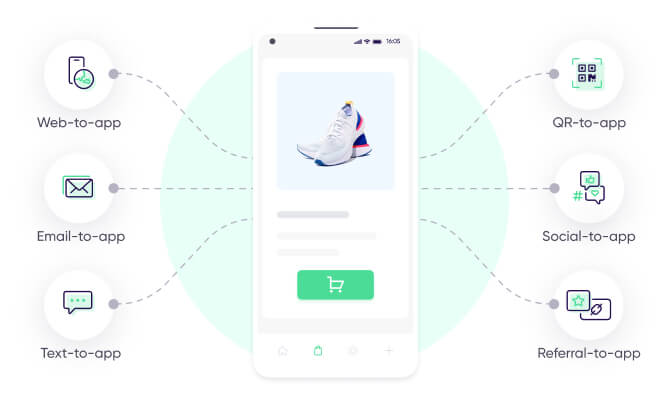
To help you wrap your head around deep linking, we like to compare mobile marketers to taxi drivers, admittedly a strange comparison at first glance.
It goes like this: The job of a taxi driver and marketer is ultimately the same: driving customers from point A to point B. And while taxi drivers use a car for their job, marketers achieve this by using deep linking technology.
In a nutshell, deep linking is used to bring users from just about anywhere to nearly any digital destination. When it comes to mobile, it is most commonly used by marketers and product managers to drive app growth, engagement, and retention.
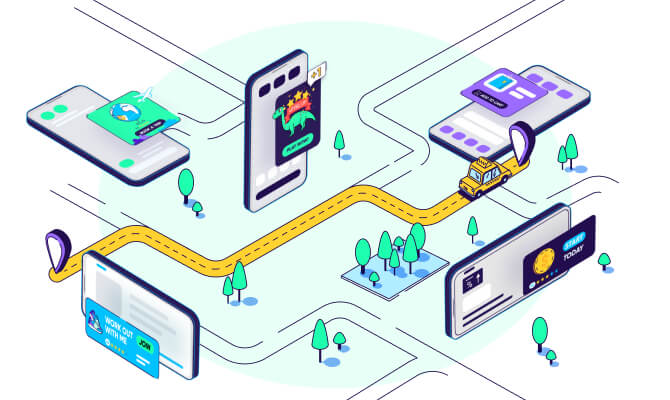
How deep linking actually works
Now comes the interesting part. How can marketers and product managers make sure that the same link they’ve placed in a campaign triggers a smooth, seamless journey to specific content for any users — regardless of whether they have the app or not and irrespective of device (mobile or PC), operating system, browser, etc.?
That’s where the magic of deep linking happens.
Using a deep linking engine, marketers define the experience for users that will click on a link.
This can include things like where an app user should be redirected to, as well as different journeys for iOS, Android, and desktop users.
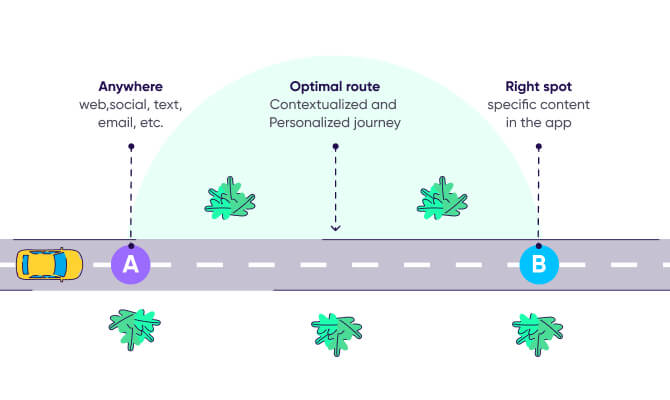
At a very basic level, a deep linking engine allows marketers and product managers to provide two distinct types of journeys — one for app users and one for non-app users:
- If the user has the app — they are “deep linked” seamlessly to the content.
- If they don’t have the app — a mechanism called “deferred deep linking” kicks in, where the user is brought to the right app store so that they download, install, and launch the app, after which the relevant in-app content will be displayed.
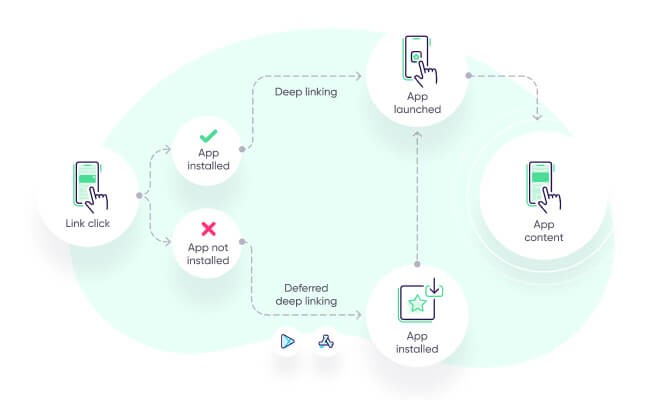
Crafting customized journeys for different users on the fly is what enables deep linking engines to create customer experiences that are contextual and personalized. Ultimately, these types of delightful journeys will generate a notable business impact, from boosting retention, to lifting conversions, and improving LTV.
Things you can do with a deep linking engine
Simple things
(1) Increase app engagement for existing users by sending an email with a link that sends users directly to a product page in your app.
(2) Drive app growth via a campaign with paid influencers who embed a link in their YouTube clip description. The links direct new iOS users to the App Store and new Android users to the Play Store, and then they are redirected to the contextual content in the app presented by the influencer in their clip.
More powerful things
(1) Drive app growth by setting up a web-to-app journey that begins with a mobile web banner that captures and reports the sources of incoming traffic, and then redirects users to the right app store, followed by the relevant in-app content.
(2) Increase app adoption by creating a campaign directing users to a mobile web landing page that displays multiple CTA buttons, each of which redirects users to different app stores and ultimately the app. (a la Coinbase’s Super Bowl commercial).
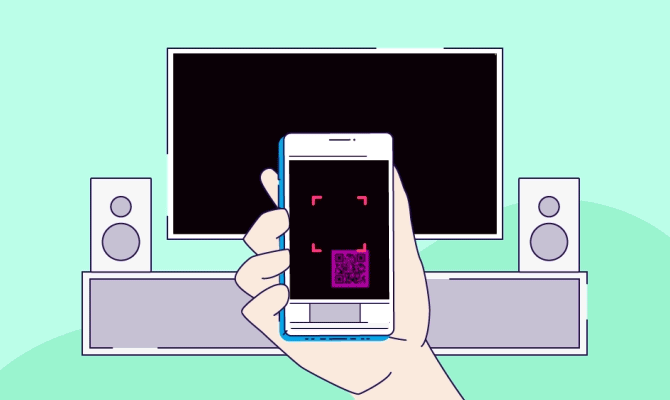
One final but very important factor to understand is the distinction between deep linking and deep linking engines.
- Deep linking refers to the action of delivering users to specific in-app content from wherever they are
- Deep linking engines allow brands to redirect users to different destinations (i.e., deep linking) including digital locations such as web landing pages and app stores.

Chapter 2
The benefits of deep linking
Now that you know a little bit more about deep linking, how it works, and some things you can do with it, let’s get back to basics and answer the question: Why do you need deep linking in the first place?
App marketers and product managers use deep linking for a simple reason:
Deep linking allows them to increase conversions by creating awesome, easily-created customer experiences that drive new and existing users to their app from any channel
By offering great customer experience (CX), marketers take more users to their desired destination — thereby widening the bottom of the funnel. Product managers, on the other hand, can better engage and retain their users.
Great CX leads to business results, and the business impact resulting from investment in customer experience is known as return on experience (ROX).
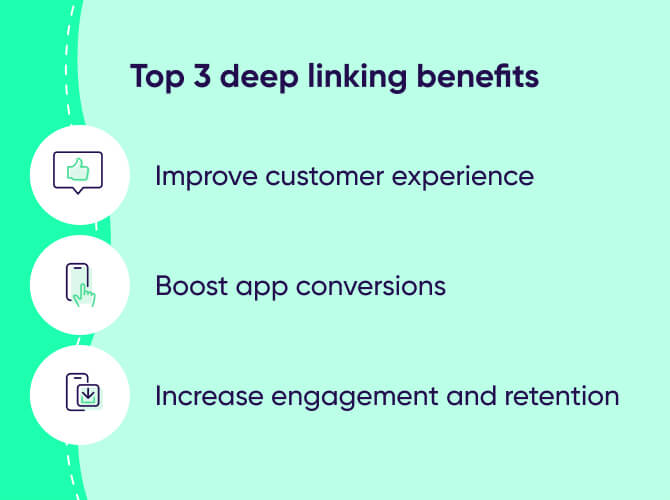
We’ve been keeping close tabs on ROX for a while and have witnessed the dramatic uplift in click-to-install and share of paying users rates for customers that use deep linking.
- Click-to-install (CTI) rates: While generic journeys –- which lack contextualization and personalization –- score just over 5% click-to-install (CTI) rates, deep linking-enabled experiences deliver up to 6X higher conversion rates.
Take journeys beginning on a brand’s mobile website (web-to-app) and in the physical world (QR-to-app) as examples. They show remarkable 27% and 33% CTI rates across all verticals, respectively.
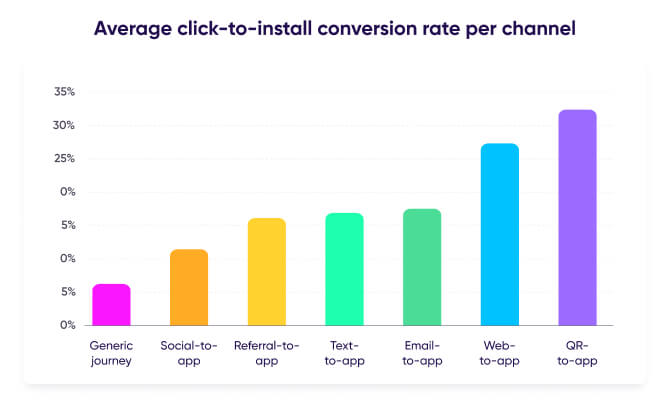
- Share of paying users: The smooth journey provided by deep linking into a specific app page also increases the share of paying users, which is the percentage of users that make a purchase after installing an app.
For example, when food and drink brands use text messages to engage their users, an average of 14% of users make a purchase
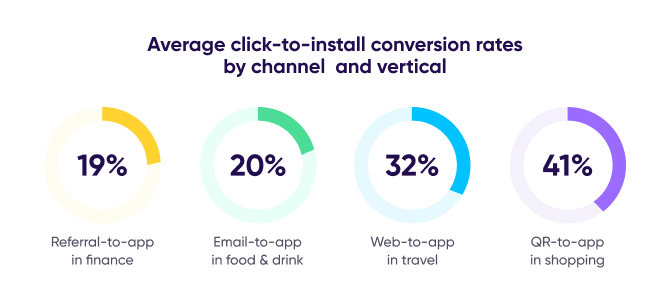
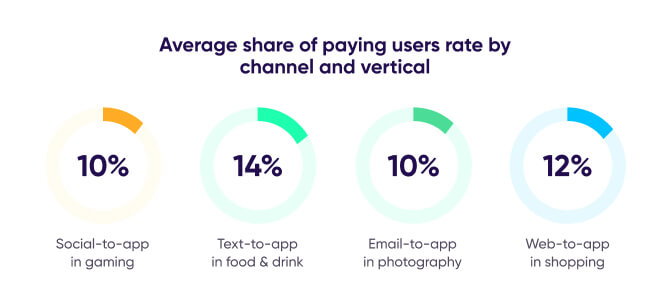

Chapter 3
Deep linking, Universal Links, and App Links, oh my
Any basic primer on deep linking would be incomplete without a discussion around Universal Links, App Links, and URI schemes. This is going to be a brief introduction but if you feel like deep diving into the topic — this dedicated blog and our Dev Hub can offer plenty of insights.
Let’s start with Apple Universal Links and Android App Links. First of all, they’re not really links.
Universal Links (iOS) and App Links (Android) are very similar mechanisms that can be applied to any campaign link in order to send users directly into an app (provided they have it).
Users sent to the app are then brought to the right in-app content (i.e., deep linked) based on the routing behavior defined in the deep linking solution.
There are a number of clear benefits to using Universal Links and App Links:
- Improve customer experience – Universal LInks and App Links open an app in a rapid, seamless way, presenting users with the most relevant in-app content without skipping a heartbeat, or having to launch the app, search for the correct content, and all that tiring stuff no one has time to do.
- Boost app conversions – A welcome by-product of improved customer experience is a boost to conversion rates. The quicker and more smoothly a user is brought to the content they want to see, the more likely they are to convert.
- Increase retention rates – The overall improved experience results in higher engagement and retention. It’s well known that it’s easier to re-engage with an existing user than to acquire a new one, which makes engagement maintenance imperative.
- Provide a secure path for users to follow – Universal Links and App Links are designed by Apple and Google, respectively, to prevent hackers from hijacking unsuspecting users to fraudulent apps.
What about a URI scheme? That would be another mechanism that allows users to open an app that’s installed on a device. Because URIs are considered less secure than Universal Links and App Links, they’ve gradually become less popular.

Chapter 4
Deferred deep linking: basics and benefits
At the beginning of this guide, we briefly introduced the concept of deferred deep linking. Since it’s part and parcel of any deep linking solution and has become an essential element of any mobile marketer’s UA toolbox, let’s dig in a little more.
Why is deferred deep linking so critical to building great mobile journeys? In the simplest terms, it’s a way to deliver app-less users to their in-app destination in the smoothest, quickest way possible.
Here’s an example:
- Thanksgiving’s just around the corner, and I stumble across a great clip with an influencer sharing a recipe for a lovely holiday dinner.
- The clip’s description includes a link that will allow me to buy the ingredients online at a nearby grocery retailer.
- Luckily, the marketer at the grocery brand has given the influencer in the clip a link created by a deep linking engine.
- I’m redirected to the App Store, where I download the grocery store’s app.
- After launching the app, I am deep-linked to the checkout page with all of the ingredients already populated in my shopping cart.
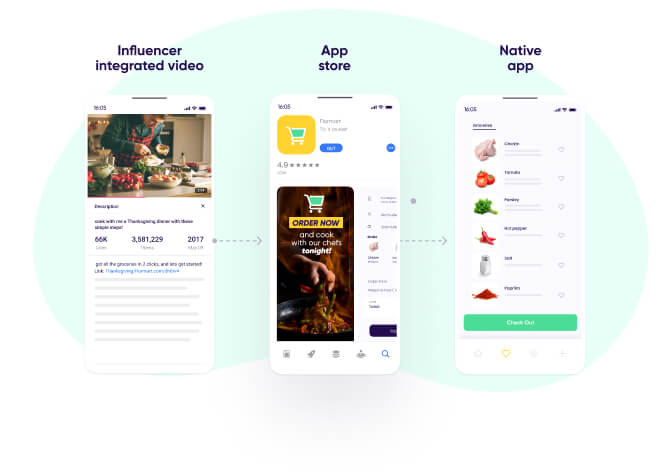
What would happen without deferred deep linking? That would depend on a few variables, such as how the grocery brand’s marketer set up the rerouting paths.
The marketer would have to create different links for various scenarios and edge cases, and I would have to follow a tedious, multi-step process to get to the recipe:
- I’d see links in the description of the influencer’s clip to download the app in different app stores.
- I’d head to the App Store to download and install the app.
- Then I’d head back to the clip to find another link to the in-app content (the checkout page).
In short, without deferred deep linking, it’s nearly impossible to provide a smooth, personal, and contextual path to the right place in the app, which would clearly undermine the ability to ramp up acquisition goals.
Deferred deep linking helps drive UA and return on experience (ROX)
Smooth, contextual CX results in delighted users, and up to sixfold boost in click-to-install we see with deferred deep linking users.

Chapter 5
Use cases: Deep linking & deferred deep linking
What do these flows or journeys actually look like and when should you use them?
This section deep-dives into six use cases that address specific business challenges. Three of these use cases will cover deep linking, which is typically used in re-engagement and retention efforts, and three will cover deferred deep linking, which is usually associated with user acquisition campaigns.
Deep linking for re-engagement and retention
A. Cart abandonment (email marketing/eCommerce)
Cart abandonment is a huge problem for retailers. After browsing, shopping, and filling their cart, users can easily decide not to complete their purchase for one reason or another.
A proven way to re-engage customers who have left their shopping cart full of goods is to proactively send them emails.
Cart abandonment emails have high open and click-through rates, about 45% and 21%, respectively. More to the point, relevant, contextual emails can recover about 1% of potential lost revenue. (Sitecore)
In the example below, a fashion retailer set up an automated process that sends emails to customers who have left goods in their carts.
The marketer uses a deep linking solution to ensure that a user with the app is brought in a hassle-free way to the checkout page, which is already conveniently populated with the items that were left in the cart.
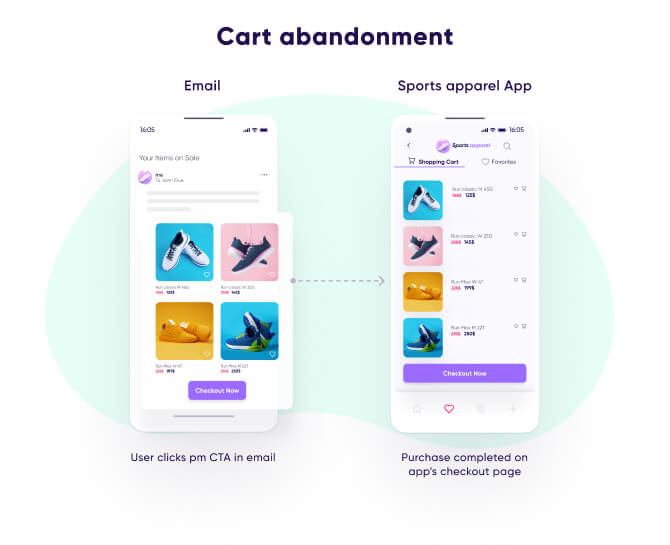
B. User acquisition (Friend referrals / Gaming)
Even in the digital age, word-of-mouth remains a powerful tactic for product and brand awareness.
In fact, consumers are four times more likely to buy when referred by a friend, so it’s no surprise that many brands encourage existing users to invite their friends to share in the fun.
In the highly competitive gaming vertical, leveraging word-of-mouth serves a dual purpose: existing users keep playing the game and become more loyal, and referred friends join as new app users.
In this use case, a gaming app incentivized its users to invite friends to a head-to-head game via a very simple and quick process.
The gamer sends a WhatsApp invite, the friend clicks on the link, downloads the game from the App Store, launches the app, and is magically brought to the waiting area in the app. Let the games begin.
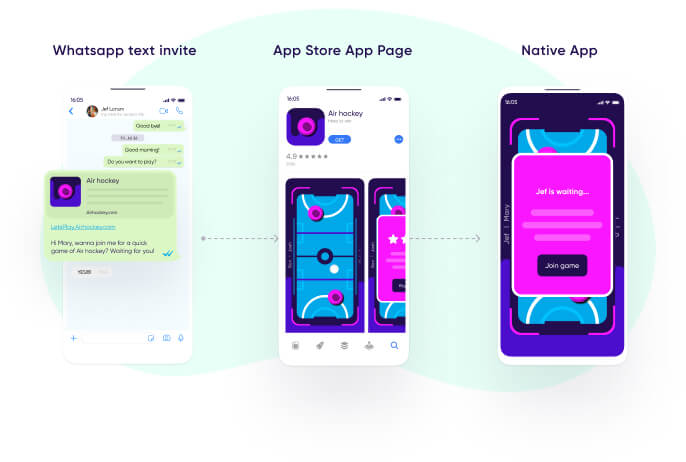
C. Average order value (Social media / Retail)
Average order value (AOV) is an eCommerce metric that measures the average total of each order over a defined period of time. This KPI is all about low-hanging fruit. Think about it: if a shopper is about to make a purchase, why not pique their interest with additional products they might need?
With the share of eCommerce revenue on mobile expected to jump from 64% in 2021 to 67% in 2024, it’s safe to say that the best channel for AOV uplift is mobile apps.
In the example below, a fashion brand shares an “outfit of the day” story on Instagram, which includes different products. Once shoppers swipe up, they are redirected to an AppsFlyer social landing page (to prevent Instagram from breaking the link).
By tapping on the “check it out now” CTA button, shoppers are taken to a pre-populated check-out page in the app, including all the products that appeared in the story.
By providing a delightfully consistent social-to-app experience, shopping apps can achieve amazing re-engagement conversion rates (more than 10% in this case).
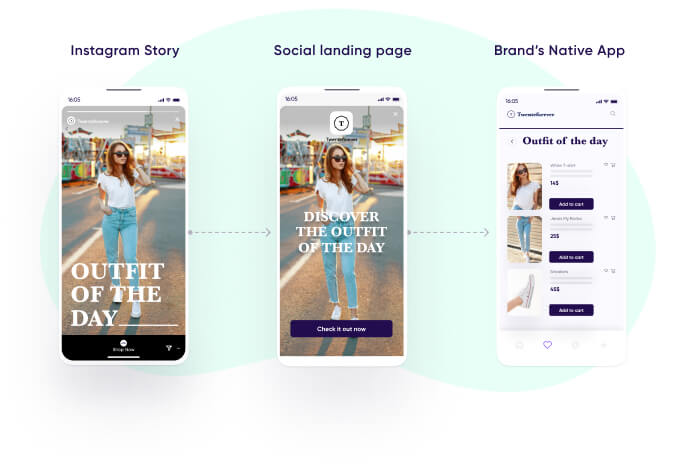
D. Traditional banking: Process abandonment (SMS / Banking)
When it comes to digital journeys, an acute pain point for finance companies is the dropoff rate of prospective customers filling out extensive insurance forms. In fact, about 75% of forms in the finance industry are abandoned mid-process.
But what if there was a way for finserv companies to assist their customers by allowing them to take advantage of CX-superior apps?
This is what forward-thinking firms already do. How?
They combine one or more of their owned media channels with deep linking to remind customers of the form they left behind, and bring them directly to the drop-off point. This way they can easily complete their desired action with minimal hassle involved.
In the below example, Int Bank has set up a process that engages form-abandoning customers, using a deep linking product that dynamically creates a unique, personalized URL for each of these customers.
An SMS messaging platform receives the link and schedules a reminder SMS that includes a CTA to continue filling out the form. When clicking the link, the app opens in the right location so that customers can pick up where they left off.
Firms that build continuous and personalized bridges to their app — can fulfill two critical goals simultaneously. They can “rescue” forms from being abandoned by customers with high intent, all while delighting customers by helping them achieve the original goals they had set out to achieve.
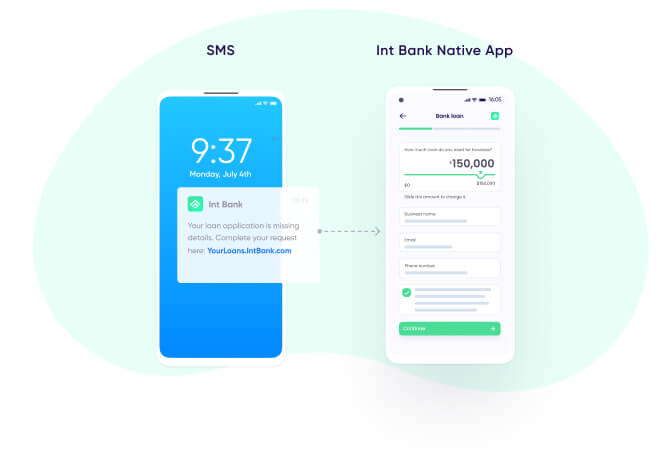
Deferred deep linking for app UA
A. Migration to app (QR code / Banking)
Migrating customers to the app can be challenging, especially when it comes to Gen X and older users who prefer to do their banking on desktop.
One tactic that has worked well for moving users to app banking is placing QR codes at key trigger points throughout the journey.
Widely used and gaining popularity during the pandemic, QR codes can be leveraged as an app onramp, providing peace of mind and ease of use to customers.
Banks can place QR codes on any page of their desktop site, in-branch signage, and marketing materials — to allow users to download the app using a simple scan.
In the example below, a bank displays a QR code on the homepage of its desktop website to encourage a user to scan it.
The marketer uses their deep linking solution to ensure that customers are redirected smoothly to the right app store and then to the right in-app content once the app has been launched.
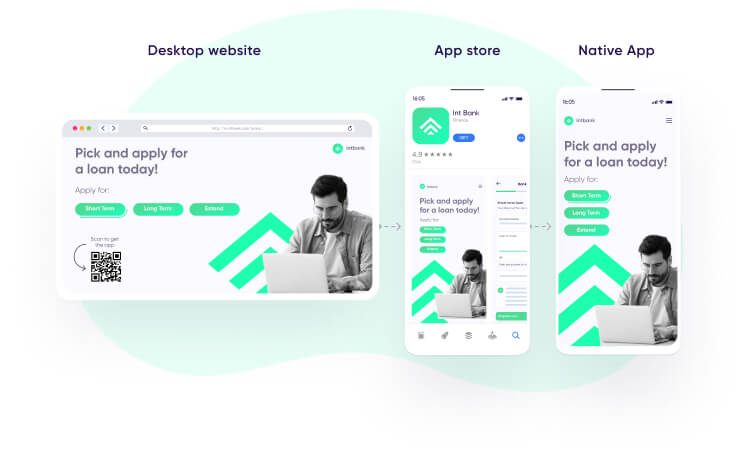
B. Increase lifetime value (Mobile web / Media and entertainment)
Newspapers and magazines have been with us way before the rise of the internet and smartphones. This industry has had to adapt and readapt itself to keep up with these two disruptive revolutions, which was achievable by repeatedly changing both its business model and distribution strategy.
Today’s readers are on mobile, and to increase LTV, media publishers need to migrate their readers from print and web to their mobile apps.
In the example below, a news app displays a web banner to users, inviting them to download the app while they are reading a specific article.
Once users tap on the banner, the deep linking engine ensures that they are automatically taken to the relevant app store where they can download the app. After launching it, they are redirected to the same article — which they can keep reading with ease.
With this contextual web-to-app experience, media publishers are achieving more than 30% click-to-install (CTI) conversion rates.
A similar flow and CTI can be achieved through QR-to-app experiences by adding QR codes to printed newspapers and magazines.
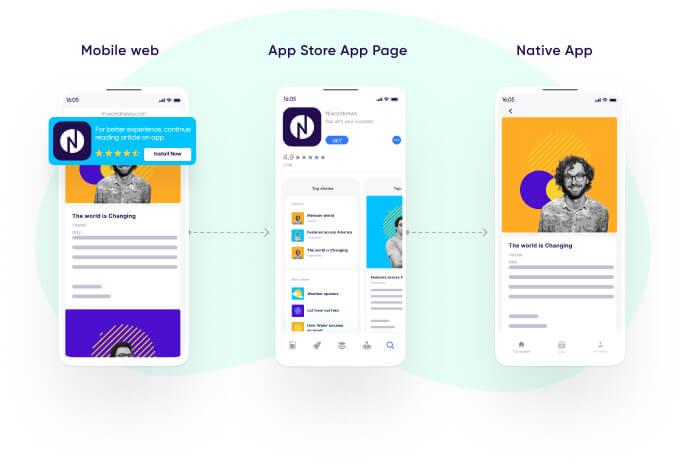
C. In-store conversion (QR code / Traditional retail)
Let’s see how a traditional retailer can use QR codes to spur in-store sales and drive user acquisition.
Below is an example of a clothing retailer using QR codes to drive in-store purchases. The retailer is looking to address a common hurdle faced by in-store customers: the need for more information about the product they’re interested in buying.
At home, shoppers can search online for reviews and user-generated content to help with their decision making. But at a physical store, a lack of information can lead to a decision to forego the purchase.
To provide instant access to the relevant information, the brand places dedicated QR codes next to each product and uses a deep linking engine to redirect users to reviews in the right channel (either web or app).
App users are sent to the right in-app page showing the app ratings and reviews, while users without the app are redirected to the mobile reviews web page.
To drive app adoption by the latter group of web users, the retailer displays a banner with a discount, incentivizing the shopper to download the app.
This enables retailers to provide excellent shopping experiences, build trust with their customers, increase their in-store conversion, and boost their ROX.
Users that scan QR codes typically have high intent. After all, the customer is shopping and wants to learn more about a product before making a purchase. It’s no wonder, then, that click-to-install rates for QR codes stands at an outstanding 33%.
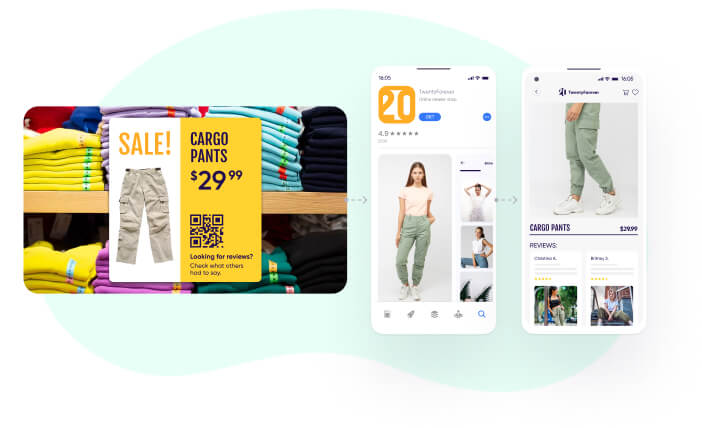

Chapter 6
Deep linking implementation
Implementing deep linking is relatively straightforward. A handful of deep linking providers offer SAAS products, and can walk you through the creation of deep links for mobile marketing campaigns.
At the highest level, marketers and product managers use deep linking solutions to define the journeys they’d like their end-users to take once they click on the deep links they create:
- For non-app users:
- Where should iOS or Android users be rerouted – an app store? A web landing page?
- Should the users be redirected to a specific page in the app after installing the app, i.e., should deferred deep linking be used?
- For app users:
- Where in the app should iOS users be routed?
- Where in the app should Android users be routed?
- Where should Android users be sent if you only have an iOS app?
Marketers and product managers can also use the power of deep linking engines to better understand campaign performance. For example, by measuring installs, revenues, share of paying users, and LTV, or for capturing the sources of users who have clicked the deep links.
What about developers? Do they have a role in deep linking implementation? The answer is: they typically do, given the fact that the app needs to open on the deep-linked page. A good deep linking solution provides ample guidance on the hand-offs between developers and marketers / product managers.
One last word on implementing deep linking. You should identify a provider that offers more than just that. Adding another solution to your marketing tech stack is typically less desirable than using a rich, robust mobile marketing platform that includes deep linking functionality in its core feature set.

Chapter 7
Key takeaways
- Deep linking is critical for mobile UA and engagement. Marketers and product managers use it to help them compete and achieve their UA and engagement goals.
- Deep linking effectively addresses key business challenges such as cart abandonment, web-to-app migration, in-store conversion, brand awareness, and more.
- The primary benefit of deep linking is driving return on experience (ROX), leading to significant business impact in the form of conversions and revenue.
- It’s best to work with a technology provider that offers deep linking as part of a robust mobile marketing platform that includes attribution, fraud prevention, and campaign measurement.

